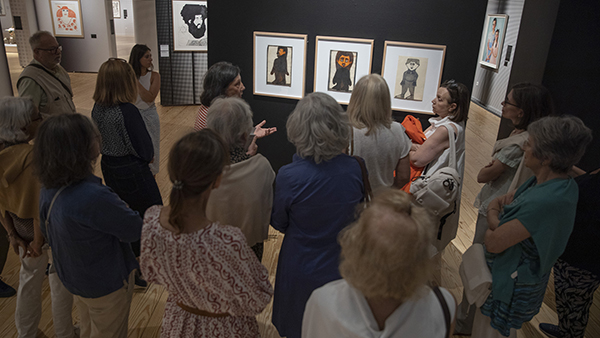Portreto de la Animo exhibition and parallel activities are the focus of the “Art & Health” programme in 2023, continuing the cultural offer aimed at minimising the impact of mental illness.
Portreto de la Animo can be visited from Tuesday to Sunday, from 10h00 to 18h00.
The parallel programme of the Portreto de la Animo Art Brut Etc. exhibition proposes, on 13 December, at 1.30pm, a commented visit by Miguel Almeida, from the Centro de Arte Oliva, dedicated to the artist Jaime Fernandes (Portugal, 1899 – 1969).
“Jaime Fernandes is unequivocally the most recognised artist of Portuguese Outsider Art. However, this recognition takes place mainly abroad, a fact that can be explained either by the loss of a large part of his work or by the fact that most of it is dispersed in collections abroad.
This obscurity has to do with the circumstances of his isolated life, the way in which he developed his work and how it subsequently circulated: diagnosed with schizophrenia in 1938, Jaime was hospitalised for more than three decades at the Miguel Bombarda Hospital (Lisbon), where he died in 1969.
According to testimonies and references to his drawings in the hospital’s clinical records, as well as the letters he wrote to his wife, Jaime Fernandes unexpectedly began drawing at the age of 66, four years before his death.
All of his known work is made up of undated drawings, made with coloured ballpoint pens on various types of paper. In them, a small number of figures, including imaginary animals, human or anthropomorphic figures appear and reappear in countless variations, always drawn in a dense weave of lines.
His letters, other writings and drawings were filmed after his death by António Reis and Margarida Cordeiro, giving rise to the film Jaime (1974), which marked the first public moment of publicity for the artist’s work.
In the words of António Reis, Jaime Fernandes “was perfectly aware of the space to be occupied by the drawing or painting. As he was limited by the small dimensions of the paper, many of his figures – men – have their arms down or raised, while the animal figures have their tails down. Therefore, the attitudes of the drawing are always a function of the delimitation of the paper, for which he always found an ingenious plastic solution. They may also be linked to an emotional, obsessive stereotyping and archetypes…””
Source: Centro de Arte Oliva

